Last Updated on February 21, 2024

It’s beautiful how movies can take us back to an innocent time. A perfect example is the absolute adoration of Jim Henson’s classic features, The Dark Crystal (1982) and Labyrinth (1986). For many, growing up on The Muppets and Sesame Street brought a level of excitement for both of these features. Even still, while Crystal made a decent showing at the box office, audiences weren’t ready for Labyrinth upon its release. Now, however, both films have found themselves well-loved and admired. So much so that both are getting the 4K treatment, and you can stream them immediately.
We at JoBlo had a childhood dream come to life. We joined other journalists and influencers to celebrate the release. And the after noon gave us the open invitation for a Henson Studio Tour. Included in the event was a contact juggler named Rewi HoopHooligan. Used in Labyrinth, Rewi put on quite a show explaining how to make us believe that the crystal ball was floating between his hands. It was impressive, to say the least, even knowing the secrets that made it all so fascinating to watch.
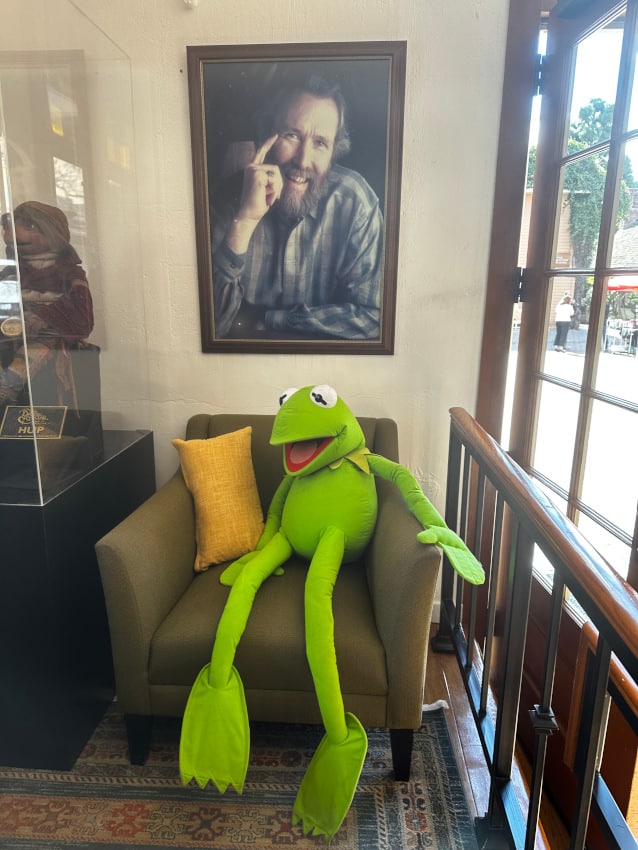
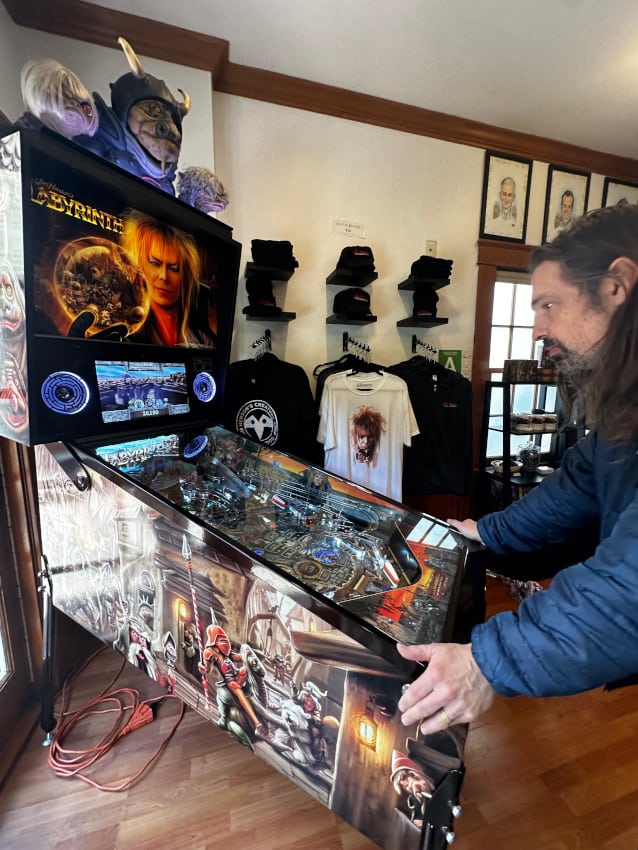
Fellow JoBlo mate Ryan Cultrera joined in the festivities, and we both dove into the realm of a Labyrinth Tarot card reading. The cards were cool, and the experience was dead on. While I’m not necessarily a true believer in that stuff, it was an intriguing session with a few things to consider. I was impressed either way.
Then came the tour. If you are a Jim Henson fan, this was one of the most impressive experiences you could have. Ryan delighted in the exhibits as we wandered the buildings holding all that movie magic. We took a ton of pics and couldn’t believe all the history that was there to experience. A favorite film of mine is Where the Wild Things Are, and seeing one of the gorgeous creatures’ heads on display filled my heart with joy. If you have any appreciation for Hanson’s magic, this was a beautiful reminder of just how vital Jim’s legacy is to fans decades later.
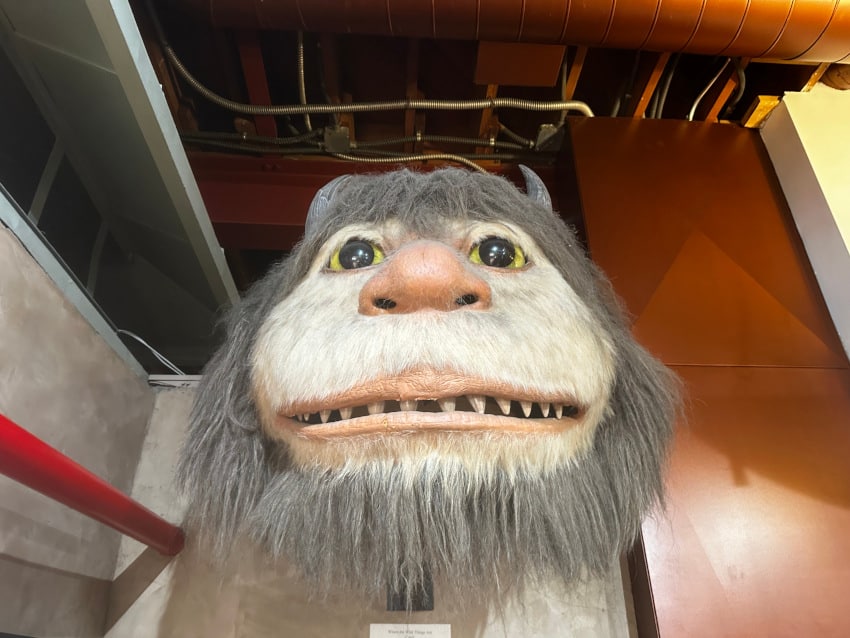
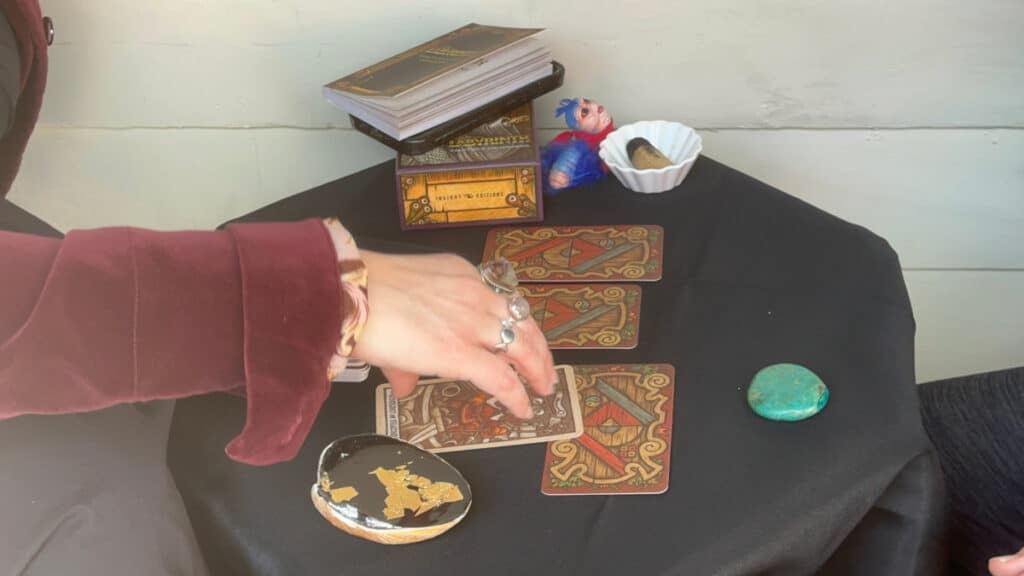
And then came the conversations. During our visit, we spoke with Brian and Lisa Henson and discussed puppetry with Toby Froud. Toby chatted about his memories of David Bowie and being part of the cast of Labyrinth. Having now become part of the behind-the-scenes crew creating the puppets, he was incredibly knowledgeable about what goes into making these creatures.
And if you’d like to relive Labyrinth and The Dark Crystal, they are both now available in 4K so I highly suggest you check out the splendor for yourself.
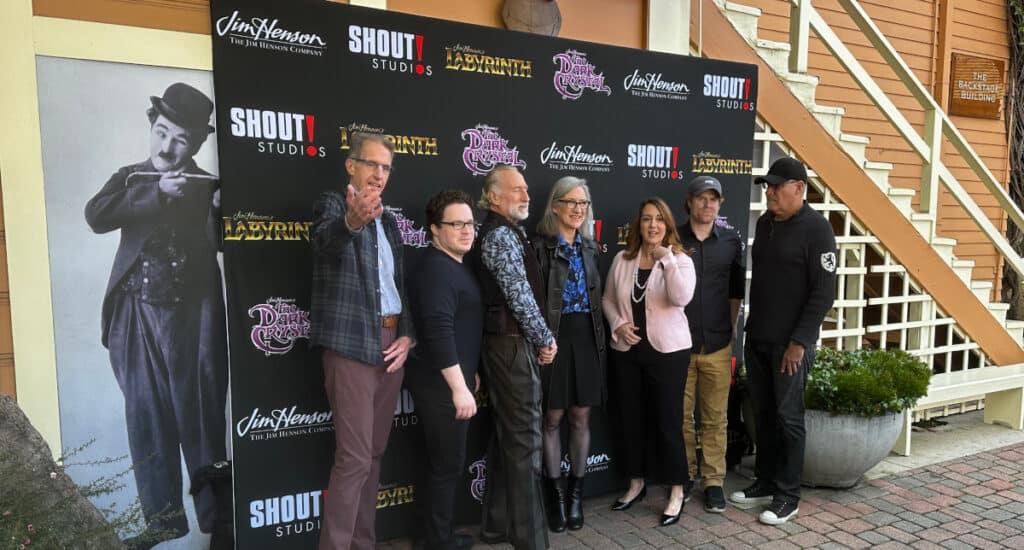
BRIAN HENSON
These movies are so important to so many people. How is it for you to go back and look at what’s changed, get these rereleased, and see these stories brought back for a modern audience, younger kids?
BRIAN HENSON. : One fantastic thing about fantasy is that it doesn’t date itself. Having said that, I guess to a degree, Labyrinth has David Bowie in it, captured it really at a specific time in his career. Maybe that has a slight dating effect, but not really because they’re fantasies. It’s really cool and very rewarding that a fantasy movie can keep being credible to a modern audience. The messages and the themes and all that work over time and cross cultural lines and all that stuff. It’s fantastic. Then part of what’s fun is, of course, at the time, we thought of ourselves doing cutting-edge technology characters, and now it’s a retro style of creating characters, which is really interesting because he said both movies enjoyed great popularity, mostly on video after their theatrical releases, and then probably leveled off a little bit. Then, when they became sort of retro 80s titles, they became more popular than ever, which is really wonderful. That’s amazing.
Are there any special scenes or moments in the films that hold a special place for you?
BH: I’m really going to be talking about Labyrinth because Dark Crystal, I was in boarding school, and I wasn’t there. I was in boarding school and college. I wasn’t really there much during Dark Crystal, although my dad had been building it for years beforehand. I was there when they were building, but when they were shooting it, that was one of the few projects that my dad did that I almost didn’t work on at all. Labyrinth, I worked all the way, start to end. Okay, so favorite scenes? I don’t know. I loved working with that little team, Sherry Weiser, who was inside of Hoggle, and Rob Tigner and, Mac Wilson, Dave Greenaway; we all worked the face. I did the voice while working the face. It was really fun working in that little tight team on Hoggle. Then I was also directing all of the background puppetry for my dad as puppeteer captain. It was all a very rewarding experience. You were asking about specific scenes. I think the scenes with David Foley were probably some of the most fun because he has a really wicked sense of humor and really enjoys it. He’s such a workaholic that for David, doing Labyrinth was like going on vacation. It was like, what? I just sit in the dressing room, I come out, we have fun for a little bit, I go to the dressing room, come out. He’s used to a really rigorous work schedule. For him, it was like he was on holiday. Every time he came out, he was always full of fun, very buoyant to work with. I remember the scenes where he couldn’t get Hoggle’s name right, which he made up, and then it was integrated into the script. Then, he would do it a little bit differently in every scene. He would always defend Hoggle. I really enjoyed doing that. The scene where he throws the peach to Hoggle was a fun one where he turns the crystal ball into a peach and throws it to Hoggle and he says, what is it? Then David says, I can’t remember. A gift, I think, is what he says, a gift. We kept doing it, and I’d say, what is it? I would do it in some weird way every time, and he’d just start laughing, and he’d go, it’s a peach. Then we would all fall apart like idiots, and we’d do it again. Yes, the scenes with David were a lot of fun. Then the scenes that were just lots of goblins were a lot of fun but also really hard work.
What were some of the technical challenges in bringing all these creatures to life and how did it all work?
BH: There were a lot of challenges. It was very ambitious for its time. Animatronics were still relatively new. It was only Dark Crystal and Star Wars that were using animatronics at the time. Training the puppeteers: I remember we trained 40 puppeteers, Kevin Clash and I, and that was a lot of work. Then, we were mixing every technique. Something I’ve always believed in when you’re trying to realize any sort of illusion is you can either. Nowadays, you can go fully digital, and you can do anything. You can just keep throwing money at it until it looks perfect. In my day, starting in the 80s through the early 2000s, you would just mix up techniques. You’d use a marionette technique for one moment of a movement and then switch to a rod technique and then switch to a different technique. Then, when you cut it together, people would go, whoa, how did they do that? Really, what you had was a series of techniques that could only do a little bit of the action, which is a little bit more like stop-action animation. In terms of the animatronics, on Labyrinth we were trying to transition away from cable control mechanisms where Dark Crystal was almost entirely cable controls. You had cable controls for everything. You had a lever, and a lever might just work an upper eyelid, and then another lever that works a lower eyelid. There were so many levers that Labyrinth was the beginning of trying to use motors more and figuring out controls where one performer could work several motors. I was working two hand controls that worked all the motors in the mouth and jaw. Hoggle was fully wireless. It was a big deal to have an animatronic character that could walk around on Dark Crystal. Augur would be walking around with a bundle of cables dragged behind and people on little rolling chairs working behind. The fully radio-controlled Hoggle was definitely an innovation and the toughest thing to pull off in that. Then what started there probably culminated in Dinosaurs, where I eventually did a series where I had 12 full-sized dinosaurs shooting a half an hour a week at sitcom, and they were all wireless. Awesome.
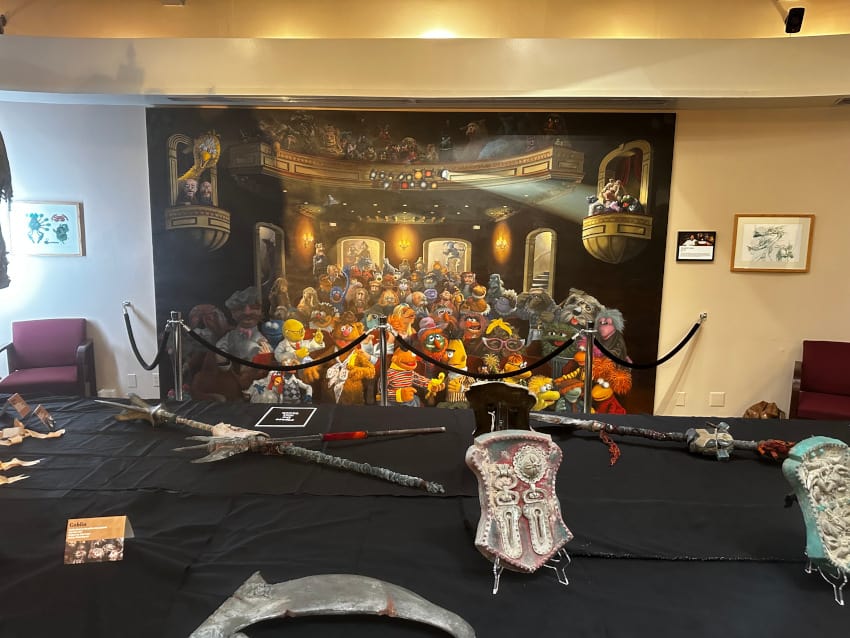
Innovation-wise, were there things that you learned that carried through in your career?
BH: Yes, I think on everything, we never start from scratch. We always build on what we know. Actually, that’s not true. We sometimes start from scratch. We try, in our company, not to do too much repeating ourselves. I know we did the big Dark Crystal miniseries, but even that was meant to be a springboard to even more techniques. Sometimes we’ll do something entirely original. In terms of the techniques for performing a character, yes, Labyrinth was the beginning of reducing the number of puppeteers required for a character. The reason why it was Little Shop of Horrors, for instance, all cable-controlled, and I performed one of the characters I performed was Feed Me, where I was inside Audrey II, and weighed 150 pounds in front of me, and then tons of cables coming out. To do that song, Little Shop of Horrors is probably the most impeccably performed animatronic. The reason is that we would probably rehearse that two-and-a-half-minute song for two-and-a-half months. We’d go to work and just do it every day. That’s just really hard work. We realized that the fewer the number of performers required to do a character, the less rehearsal it would require. Ultimately, what I wanted to get to was such a small team that they could even improvise, that they can even just go off without any preparation. Actually, I normally really did that on Earth to Net, which is a very recent production where I had a very complex animatronic character who was doing a live comedic interview with a guest. It’s not scripted. Ultimately, we were trying to get to a place where an animatronic character is almost as flexible as an actor.
Labyrinth has been talked about, a sequel, a spin-off, something for probably as long as we’ve been journalists in this room. I want to know, how important is that still to you? Do you have any updates?
BH: My sister is mostly working on that. I can say we’re still very enthusiastic. We are actively engaged in developing a sequel to Labyrinth.
Was there ever a character that you envisioned differently? Obviously, the character development and the designs are incredible, but was there ever a character that you envisioned differently?
BH: That would be a question for my father. Because I didn’t envision the characters, I realized the vision. My job was to realize the vision that my dad and Brian Froud created together. Brian was designing with my father and then the creature jobs building, and then I had to; I was the one who had to figure out how I could get those creatures to do what my dad was hoping that they’d do in the scenes. I can’t really say, yes, I’m the wrong person to ask. I think we got it; there are probably things that were more impactful than we thought. I didn’t think the worm was going to be as important. People really remembered the worm, and I honestly think it’s a great little effect. It was just a little tiny table-controlled worm, and then you cut it, and then it was a hand puppet. I think it was honestly just because the worm was really nice to Sarah. Literally, you get to the end of the movie, and you go, nobody was really nice to Sarah. Hobble eventually is, Ludo certainly is, but all the other parts were not nice, and that little worm was just so inviting. Sure, yes. Bog of Eternal Stench, nobody knew what to expect. Honestly, we didn’t. It was just like a free-for-all with the art department and the special effects department, and it really started stinking. Yes, because in those days, now cameras are extremely fast and you can go into a shooting stage, and it’s actually much more often, it’s much dimmer than the lighting that you would have in an office. Back then, we had to put so much light that the stages were all really hot, and makeup artists were constantly removing sweat from all the actors. That bog got really stinky. By the time we finished, it really was the Bog of Eternal Stench. Let’s see. , Shaft of Hands. Shaft of Hands was a really tough one because it required so much to set it up. It’s leaning boards from 40 or 50 puppeteers around a shaft with an actress on flywires. Even when we were rehearsing, it would have to be a stand-in on flywires. None of us could see what we were doing unless there were cameras from the outside pointing at us because we were all blind and behind. That one just turned out really good, and it terrified me. I have no idea if this is going to be good. We had an idea of what we could do, but we didn’t know what positions we were going to be in or anything. It turned out the only real hurdle with Shaft of Hands is my dad trying to direct. Okay. The one that’s sort of to the left. Jennifer. Just wave so I can tell you which one. No, five of you are waving now. Wave one at a time. Okay, now none of you are waving. Somebody wave. No, now five are waving. It was impossible for my dad to direct. We had to quickly do an illustration that showed what person was behind every pair of hands around Jennifer so that my dad could look at it and could actually talk to us.
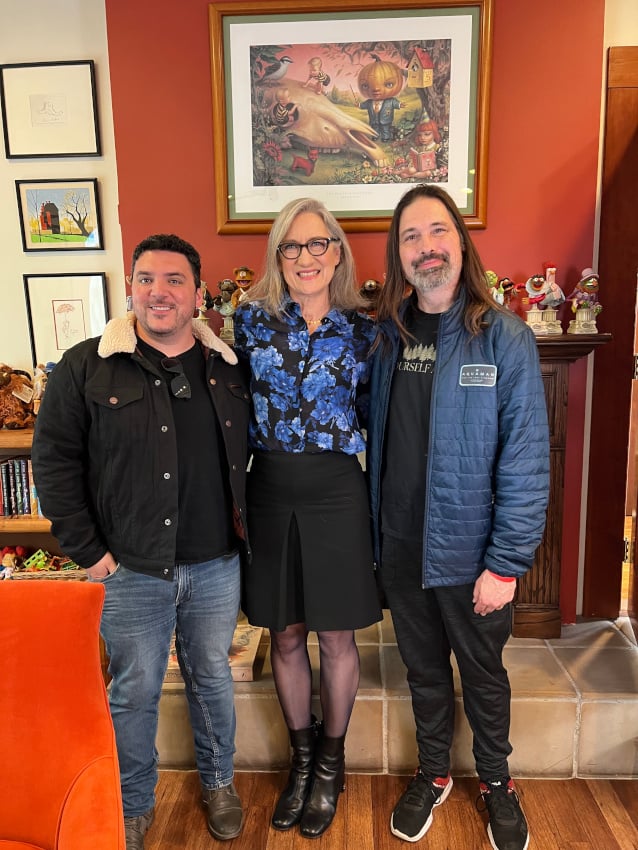
LISA HENSON
Did you ever think that The Dark Crystal would be one of the crown jewels of the company?
LISA HENSON: That’s a really good point because when The Dark Crystal was first released, people were a little bit confused by it. Jim Henson and the Muppet puppeteers had only been doing Sesame Street and The Muppet Show. They’d been doing many other things, but what the audience knew about was only Sesame Street and The Muppet Show. Yes, the movie was greeted with some confusion, particularly by the critics, but it did actually do fairly well. The funny thing is some people think The Dark Crystal was a big commercial failure. Actually, Labyrinth was a commercial failure. Dark Crystal did okay, and it did well enough for George Lucas to help Jim raise the money to do Labyrinth. It wasn’t so much that it didn’t perform well; it’s just that it created a lot of confusion in the minds of the audience. Why is Jim Henson trying to scare our children? Right.
When did the change? After the release, when did people start going? No, this is special; this is something I want to share with my children.
LH: I’m not exactly sure, but it’s been quite a while. It’s been quite a while. It’s been quite a while. Certainly, all of the 2000s, I would say, when the films were less than 20 years old or maybe about 20 years old, they were considered classics already. It’s nice to have such enduring love for these movies and to now have Shout Factory giving it another big push. We’re excited because we always want to have more generations, new viewers, and families, including their new youngest generation in, watching the films again.
Do you have any moments from this film that really stands out to you or that you always go back to?
LH: The Dark Crystal really works as a whole for me. It’s not that I don’t have favorite scenes because I do. I guess if I have to really answer that, I would say the Skeksis Banquet is the most fun. It’s the most lunatic, crazy. You’re just seeing unbridled weirdness in that, from what they’re eating to the way they treat each other. The gaudy narcissism of the whole scene is amazing. Even just to be like, hmmm. I do that every day. Just the idea that they think they’re so fancy and important and they’re so repulsive and gross. There’s something so pleasing about that.
The Skeksis are some of my favorite villains. I wanted to see what went into creating the characters of them. How did you guys choose these as your villains?
LH: This was Jim Henson working very closely with Brian Froud. The whole world was designed by Brian Froud. He designed every character. The plants, the creatures, and the world itself all came from his visual imagination. I think the idea of the Skeksis was a little bit what I was just saying. My father really liked the idea of something reptilian. absolutely creepy and a little bit dinosaur-ish or dragon-y. Dressed in frippery and finery and thinking that they look amazing. That vanity was really built into these characters. Even the strongest, toughest ones are very vain. They all are preening and peacocking around. Even the tough ones. Brian Froud’s costume designs and his original sketches are full of little… You can see the lace and the jewels. They were always envisioned that way.
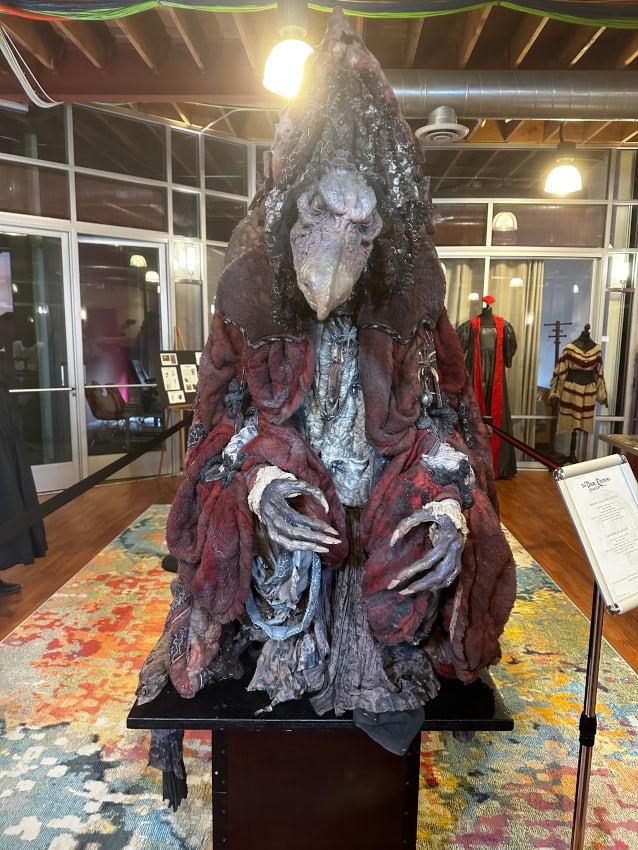
In terms of Dark Crystal, are there things that are still benchmarks? That film really helped establish where you guys continue to go to this day, either in an ethos or in terms of something that was invented or crafted in that. You’ve certainly improved upon it, but that was really a benchmark for you guys taking your craft to the next step.
LH: When the Dark Crystal was first conceived, when they put the workshop… They put together a sort of think-tank workshop to make creatures. They were calling them creatures instead of puppets. They were using much more naturalistic textures. Trying to come up with ways where the puppets would perhaps look more real on camera. They would also take these creatures outside, shoot them outdoors, see how they looked in nature. There were so many technical innovations in Dark Crystal. It’s almost countless. Whether it was the materials that went into it, the controls were all original for that movie. Even the word animatronics was applied to the puppets for that movie. I was actually there in a room when somebody was going through the lists of titles that they could give people for what they did in making the puppets. They were like, there’s a union position called animatronics builder. They were like, okay, circle that. We’ll call them that. This whole business of animatronics, which was the 80s and 90s, all of it came out of Dark Crystal, E.T., and Yoda. There’s nothing that doesn’t descend from those characters, that entire industry.
I was just going to ask about the Netflix show and what you guys learned from that. That seemed to be the most amazing technical achievement that you’ve ever done, but it obviously didn’t connect in some way or connect enough or whatever. What have you learned from that experience, and is the Dark Crystal still alive somewhere in your heart?
LH: The Dark Crystal is very alive. It was such a spectacular experience. I would say for almost everybody who was involved with it was the best thing we ever worked on, the most fun we ever had, the biggest, deepest dive into puppetry in this art form that most of us will ever have that experience again. Dark Crystal is going to keep going. Whether we ever do 10 hours of pure puppetry, premium television quality, we may not get to do that again, but we’ll definitely get to do more Dark Crystal. One of the wonderful things about the Dark Crystal world is, for the Henson Company, it’s like our mini version of a Star Wars universe, because it’s a real expansive world. It’s got a past, a present, a future. We have things in even other dimensions that are happening at the same time. We have a whole story in our publishing that takes place in the center of the Earth, but it is still the same world. It’s really fun for us that we can revisit the Dark Crystal, whether it’s in publishing or gaming, and even within publishing, whether it’s graphic novels or the YA books, that we’re able to tell all kinds of stories that didn’t even make it into the productions.
Is there any truth to the story that Labyrinth began life as a Dark Crystal sequel? No. Okay. I heard that somewhere. I didn’t know if it was true.
LH: There was a very little bit of Dark Crystal sequel storyline developed by David O’Dell and my father. We wrote it up as a feature film script. Then, when we made the Dark Crystal television show, we decided not to base it on that script. We went into the prequel era because we wanted to see what was it like when the Gelfling were thriving and they had civilizations. Basically, there was a genocide in the Gelfling world. We wanted to go before that. For the television series with the big expanse of what we could produce, we did that. I felt a little bit bad that the sequel storyline didn’t get produced, so we published it. That became the Power of the Dark Crystal graphic novel. There are two graphic novel series based on Power of the Dark Crystal. It has Jen and Kira in it. They’re very old. It’s years and years later. They’re sitting on the throne. It’s what has happened in the kingdom in the period of time that they’ve been ruling it.
We were talking with your brother about a potential for a Labyrinth sequel. I think the thing that always struck me is that your dad was ahead of his time with a lot of his ideas and it took audiences, like you said at the beginning, a while to understand and then get caught up with where he was really going and his innovations and ideas. As we’re hearing now, we finally got the sequel to this, and Labyrinth is being talked about. Are there other things, we talked about the Storyteller as well, are there things that you guys look at as a company and say, listen, the world’s caught up and maybe the things we had to sit on for quite some time, for budget or just for interest.
Do you guys look in the archives of your dad’s old scripts and things and just go, okay, let’s revisit? Are you looking more at new properties and things to introduce the world and to a degree innovate again with what your dad was always doing and what you guys have done?
LH: It’s a great question and it’s a bit of a balancing act. I think more of what we do is new because we have a small library. We’re not the Walt Disney Company, where they can go into just a random vault and find a hundred new things. We have a smallish library, so we don’t have as many legacy titles, but it’s a balance. I think we take more risks with the new things. Then, when it comes to doing a legacy property, we go for perfection. We don’t want anything less than a perfect product. If it’s the Dark Crystal television series or if it will be a Labyrinth sequel, and a good example of that is the Fraggle Rock series on Apple, which is the production value is so good. I think it’s everything anybody would have hoped for from a new Fraggle Rock series. When we’re doing the legacy titles, we shoot as high as we possibly can and then we are a little more experimental and try new things or maybe try something we’re not sure if it’s going to work in the new things.
Brian said to ask you about a Labyrinth sequel, and that you were going to tell us where it is in development, who’s attached, whether or not Conway’s coming back.
LH: The story.
Yes, and the story. Why has it taken so long to get that off the ground, and where are you now?
LH: It is set up at TriStar. TriStar, which is one of the Sony studios, will do it. TriStar was the original distributor of Labyrinth. They have wanted for many years to do a sequel to Labyrinth. We just haven’t been able to get the script right. We’ve had a couple of scripts written, and we’re going to start over again. We’re going to start with a new script and a new director. Okay, I was going to ask if Derek’s in. No, it won’t be anytime soon. In fact, because we’re in that starting over process, I just don’t even want to ever talk about dates or when it could be because I don’t want to get anybody excited.
We’re not at Labyrinth 2 yet, but are there people that you’re thinking, hmm, okay, we could Tilda Swinton or someone like that, somebody who could capture Bowie’s magic?
LH: That particular idea seems very odd to me, and I’ve heard it brought up a lot. People have said that Tilda Swinton should play Jareth. I think generally we’ve been pursuing ideas that he’s not in, that Jareth isn’t in. Because it feels, it’s very hard. I think people have said she could do it, and I don’t disagree. Then the other point of view is why? Why not create new characters? If we can have Jennifer, if we can have Sarah be the continuity, that would be great. It’s good, absolutely.
Was there any concern with Dark Crystal being the first and really only puppet-only feature having such a dark tone? It’s not a comedy, it’s not a little kid film, it’s a spectacular piece, but it does have a much more serious tone. Was there any concern with that when you guys were going into it?
LH: Yes. My father knew he was just stepping out into the unknown with that because he was so famous for The Muppet Show, and the Muppet movies were being made at the same time. The whole Muppet world was ongoing, very successful. He directed The Great Muppet Caper right before Dark Crystal. He did them back-to-back. That was in post-production. The Great Muppet Caper was in post-production basically while Dark Crystal was shooting. He was really holding both ideas in his head at the same time, like this is what the Muppets can do, we’re going to be a big crowd-pleaser, and here’s what I’m going to do over here that is going to be deep fantasy, dark fairy tales. I think he knew it was pretty risky.
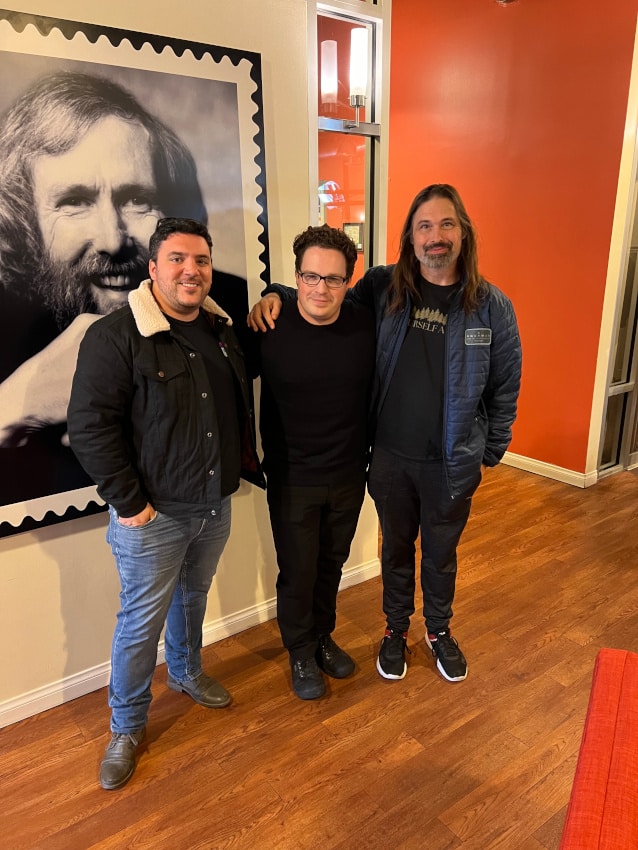
TOBY FROUD
What’s the feeling like when you create something that you are proud of when you finish?
TOBY FROUD: It’s wonderful because you’re exhausted. It’s interesting because then you’re either onto the next thing, or you just know you’ve got to do about 12 more of them.
Are you ever sad, though, when you’re done with a certain character?
TF: Yes, I am. I think there’s an energy that goes into making something, especially the first time with something. For me, I do a lot of maquette work. You’re taking the first moment from a 2D design into three dimensions. That’s fun because the energy’s there, one from you as the sculptor and creating, but everyone else around you, the director and the creatives, the higher-ups, they’re all wanting to see something come to fruition, and they’re all bringing their inputs into it. It’s great because you get to translate that. When you get a room of people going, yes, that’s it, that’s the energy. Then it’s really cool because at that point, you then get to throw it into a workshop of people and creatives and build it into a moving puppet or a character that’s going to be either live-action or stop-motion. That’s when a whole bunch of people get to do that. Then you go through the process again. You get the moment where the director goes, yes. Then you get to throw it to a whole other set of people, which are animators and puppeteers, and they bring it to life. They make it function and move, and they make you, the audience, believe. We do all those things. It’s a really… Then you get to see those things come back to you, like moving on screen, which is beautiful, and then also come back broken, and you have to fix them. It’s like you’re going to that hospital where you’re not caring for your patient, going, it’s okay, we’ll get you back out there. I love that. That’s the whole process. You have different stages of feeling really good about it and then sad about it, and then really good about it, too.
Having worked with, not only here, but Laika, what are some of your favorite creations that you’ve put into fruition on the screen?
Let’s see. I love… The things that I actually… I got to take from Maquette to… Apart from Gelflings and stuff, but on the Dark Crystal TV show with the Hensons, we did something called the Grunex, which hadn’t been in the original film, but they had been designed in some respect. We went back to the rough sketches of my father’s, and then I did new Maquettes, which are just actually over there, in that case, in the middle. Then we got to build them into puppets, and they became characters and had things in the series, and that was really cool, because you get to see it from that moment to that moment, all the way through. That’s brilliant. That’s awesome. Yes, and then… In stop motion, it all depends… I think for me, the Box Trolls was really fun, because they were close to my heart. Box Trolls. They’re fun, modern-day type creatures. Getting to create some of those and work with the amazing people and building them. Kent Melton was one of the other Maquette sculptors on there. Getting to learn from him how to translate animation from 2D into 3D, to be able to then make sure that stays with the whole puppet and the process. I learned so much there, which then applied through all the films. I think then Pinocchio would definitely be the Angel of Death and Life. Those were especially… The dogfish. I did a lot of the creature work, and that was really fun. Beautiful. That was really fun. Those were good challenges as well, to create, because you deal with del Toro sort of things, and that’s an amazing style with Guy Davis’s designs. Translating them, so they don’t quite feel like my own stuff at all. Really trying to bring those to life. I enjoyed that immensely. It was good fun.
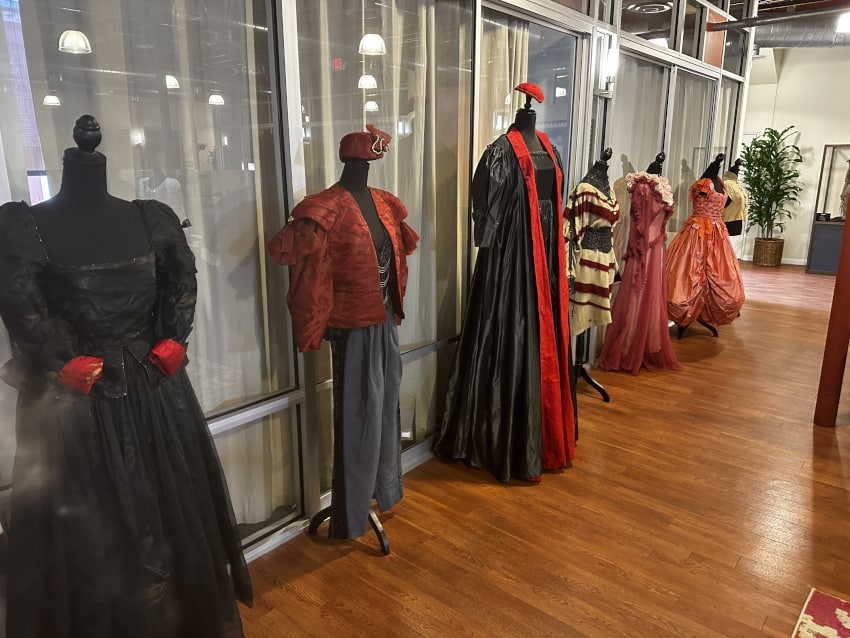
Do you remember the first time when you were so little when you were in Labyrinth? When did it first process either that your parents told you that you were in the movie or that watching it for the first time you could be outside of yourself and have that experience?
TF: I always, I always knew I was. I was always just a part of it because I grew up surrounded by all those things and literally surrounded by those things throughout the films because I was in the workshop, so I loved playing with the puppets or pinching the goblins’ noses and things as a baby. That’s why it worked for me because I was so comfortable around these things. They weren’t scary. I happened to be the right age, or I happened to be the right sort of baby to be able to do that. That’s why I was there, and I was chosen for that. Then after it I grew up watching the movie so I don’t know I don’t it all just felt natural and then also I had a photograph of me with David Bowie as Gerald in my room. It’s still in the room at my parents’ house.
What would you recommend for people interested in getting into puppet creation and sculpture?
TF: Do it. Absolutely do it. It’s easier nowadays to get an audience to see things. It was harder years ago, but now you’ve got social media. You can absolutely build something and put photographs or video of it online, and you get an instant reaction. It’s also a really hard thing because you have to put yourself out there. Boy, the world is mean. The world is mean. Because people can instantly say something, good or bad. That’s tough. Don’t get disheartened by those things. Keep making them. You gain groups. You get to see the other people. You get to feed off of people and create community. That’s the whole beauty of something like a puppet workshop or a stop-motion workshop. You are a group of people who spend a lot of time together building and creating. It becomes family. That is a big difference. That’s tough when you do it on your own. Keep going. Find that community, whether it’s online or whether it’s a group of friends. Just keep making. Don’t worry about the end result. Don’t worry about being good yet. Just create. Because then you get better. You just have to keep going. Don’t get disheartened by the things said in the book.
Is there a favorite anecdote of your father related to working with Jim?
Anything that changed him or impacted him as an artist with your collaborations?
TF: I don’t know if there’s anything particular between my father. Because they worked so well together. Jim allowed everyone to play and work. Because he would always come in and go, I would like this. This is great, but can you do this? People may say, no, Jim, I don’t think we can. He’d go, I think you can.
What are you excited about in the future that you can talk about that you’re working on?
TF: I’m always excited for new stop-motion things. There are. There are lots of, Pinocchio, Guillermo del Toro and Pinocchio opening stop-motion back up from the old art form. There have been successes along the way. It always feels like it’s on the brink of extinction. Then a whole lot of awards. There was a whole other light shone on stop-motion. There’s now a moment that there could be a lot more happening. We hope so. there are a lot of projects on the horizon. We’ll see. You just never know what’s going to hit and what’s going to stay. I’m excited for all of those possibilities. That’s really good. I think with the computer technology, CG and everything, levels being so high now, amazing things, that they’ve actually caught up to puppets. I say that in the way that it took over from puppetry and puppets became effects and disappeared. Now you can do a puppet and enhance it. That’s the best thing. They’ve proved it with Grogu, and they’ve done all sorts of different characters and things. You’re seeing it again and again in amazing shows and work in the world. I’m excited for that. I’m excited for that combination more. I hope there are some really interesting things that will come out soon, or in the next few years, to be able to create new worlds in new ways. Using all the technology now. Together, again, grounded in puppetry, grounded in something that you can feel and touch.
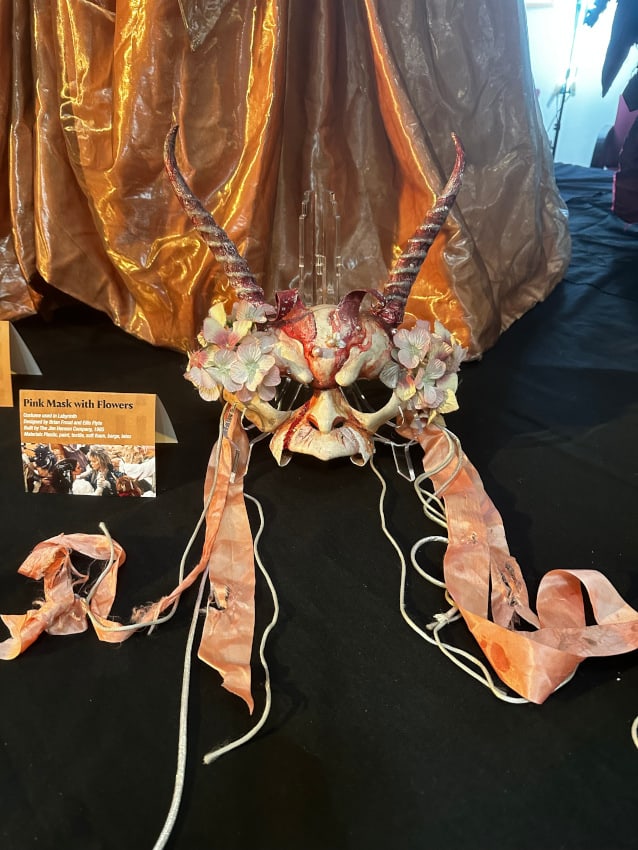
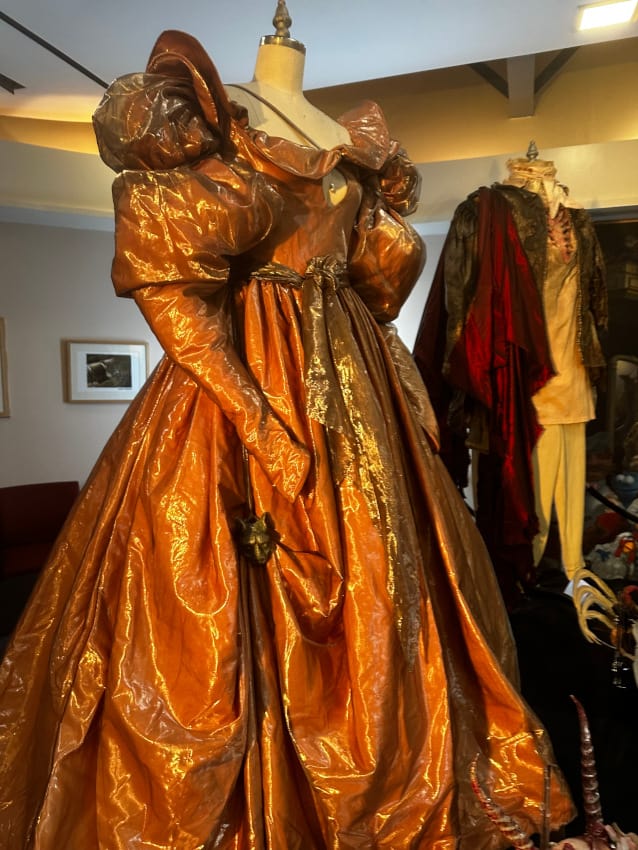
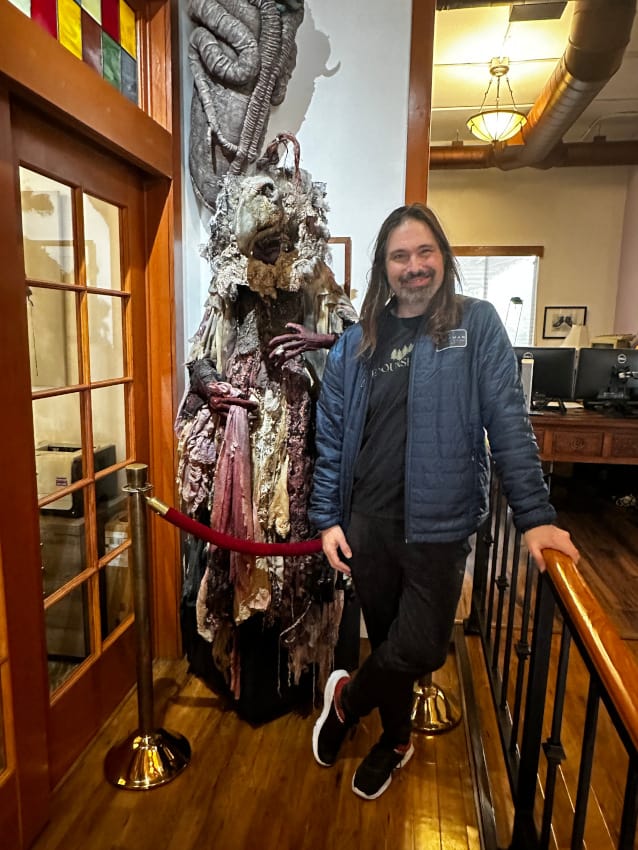
Both Labyrinth and The Dark Crystal are available to stream on Apple TV in 4K. The two features are worth bringing a little nostalgia back into your life. Thanks to everyone from Shout Factory and Henson’s Studios for such a terrific event.
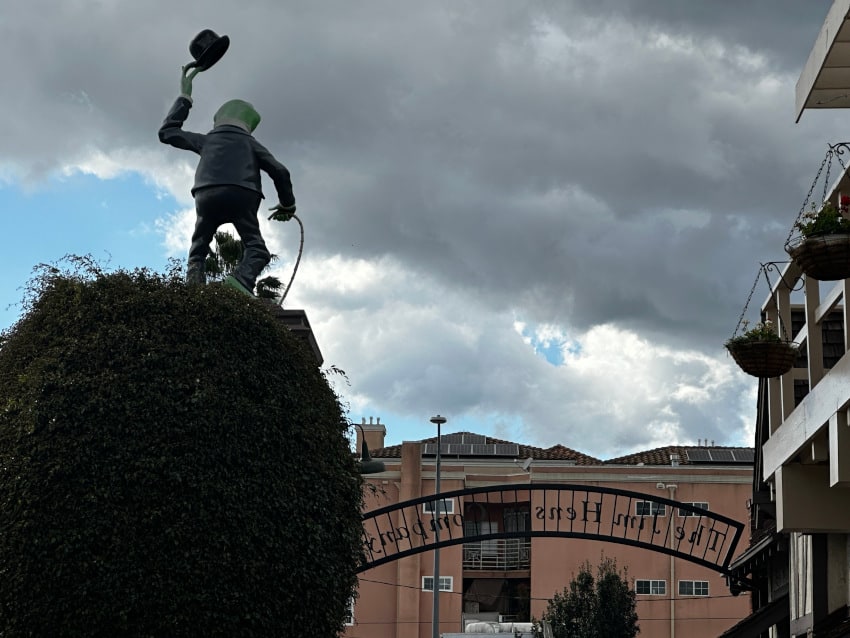








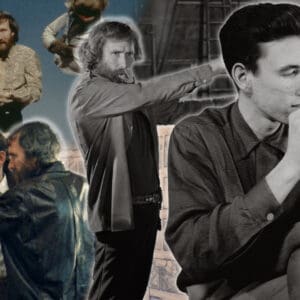
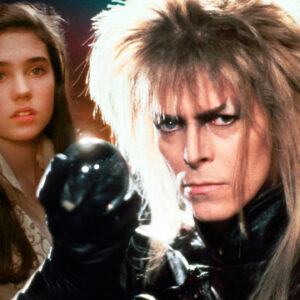










Follow the JOBLO MOVIE NETWORK
Follow us on YOUTUBE
Follow ARROW IN THE HEAD
Follow AITH on YOUTUBE